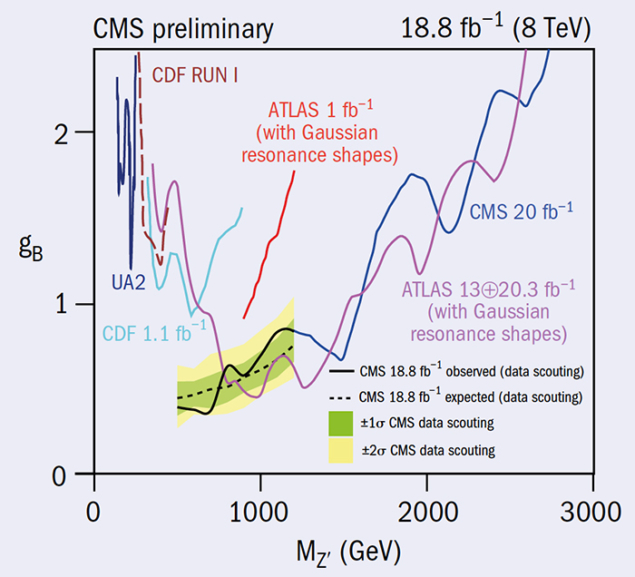Proton beams crossed inside each of the CMS and ATLAS detectors 20 million times a second during the 2012 LHC proton–proton run. However, the physics programme of CMS is based on only a small subset of these crossings, corresponding to about 1000 events per second for the highest beam intensities attained that year. This restriction is due to technological limitations on the speed at which information can be recorded. The CMS detector has around 70 million electronics channels, yielding up to about half-a-million bytes per event. This volume of data makes it impossible to record every event that occurs. A so-called trigger system is used in real time to select which events to retain. Events are typically required to contain at least one object with a large transverse momentum relative to the proton beam axis. This restriction is effective at reducing the event rate but it also reduces sensitivity to new phenomena that might occur at a smaller transverse-momentum scale, and therefore it reduces sensitivity to the production of new particles, or “resonances”, below certain mass values. While many important studies have been performed with the standard triggers, the necessary reduction imposed by these triggers seriously limits sensitivity to resonances with masses below around 1 TeV that decay to a two-jet (“dijet”) final state, where a “jet” refers to a collimated stream of particles, such as pions and kaons, which is the signature of an underlying quark or gluon.

To recover sensitivity to events that would otherwise be lost, CMS implemented a new triggering scheme, which began in 2011, referred to as “data scouting”. A dedicated trigger algorithm was developed to retain events with a sum of jet transverse energies above the relatively low threshold of 250 GeV, at a rate of about 1000 events per second. To compensate for this large rate and to remain within the boundaries imposed by the available bandwidth and disk-writing speed, the event size was reduced by a factor of 1000 by retaining only the jet energies and momenta in an event, reconstructed at a higher-level trigger stage. Because of the minimal amount of information recorded, no subsequent offline data processing was possible, and the scouted data were appropriate for a few studies only, such as the dijet resonance search. The resonance search was implemented directly in the CMS data-quality monitoring system so that, should deviations from the Standard Model expectation be observed, the trigger could be adjusted to collect the events in the full event format.
The first results to use data-scouting were reported by CMS in 2012. These results were based on 0.13 fb–1 of proton–proton collisions at a center-of-mass energy √s = 7 TeV, collected during the last 16 hours of the 2011 run. New results on dijet resonances have now been presented, which employ data-scouting in a much larger sample of 18.8 fb–1 collected at √s = 8 TeV in 2012. The results are summarised in the figure, which shows exclusion limits on the coupling strength (gB) of a hypothetical baryonic Z´B boson that decays to a dijet final state, as a function of the Z´B mass. The CMS results, shown in comparison with previous results, demonstrate the success of the data-scouting method: using very limited disk-writing resources, corresponding to only about 10% of what is typically allocated for a CMS analysis, the exclusion limits for low-mass resonances (below around 1 TeV) are improved by more than a factor of four. Although no evidence for a new particle is found, data-scouting has established itself as a valuable tool in the search for new physics at the LHC.









46 Comments